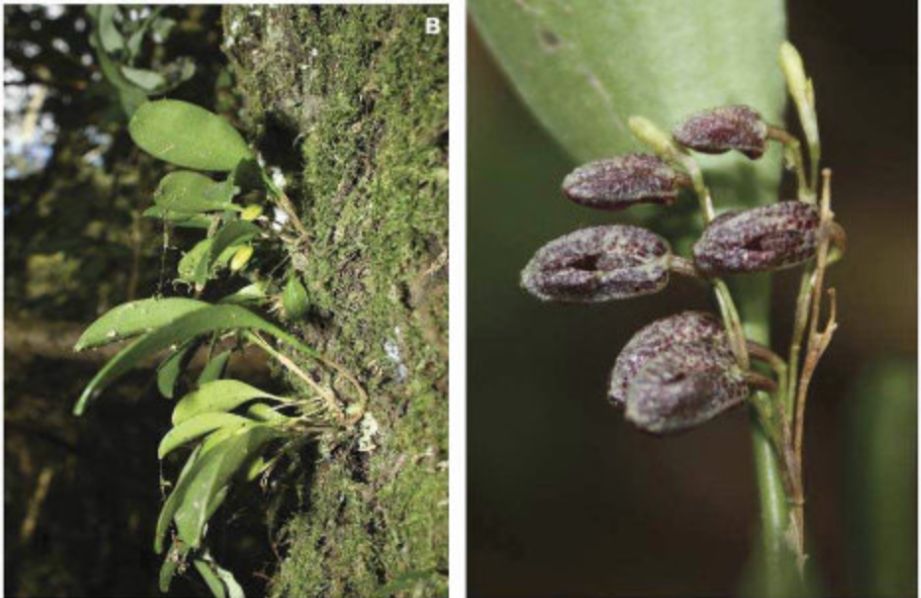

Pleurothallis zootrophionoides [Castañeda-Zárate & Ramos-Castro] in ed. SUBGENUS Effusae Luer 2000
Photo/TYPE Drawing by © SE Ramos-Castro and PLoS ONE 7(11): e48822 (5) Castañeda-Zárate & Ramos-Castro 2012

 LATE
LATE  EARLY
EARLY 
Common Name The Zootrophion-Like Pleurothallis
Flower Size .28" [7 mm]
Found in Chaipas state of Mexico at elevations around 2300 to 2500 meters as a miniature sized, cold growing, caespitose epiphyte with erect slender ramicauls enveloped by obtuse, dilated towards the apex, tubular sheaths and carrying a single, apical, erect, fleshy, slightly arched, oblanceolate to elliptical, rounded and minutely trilobed with a mucronate apex, carinate on abaxial surface, canaliculate below into the petiolate base leaf that blooms in the late summer and early fall on on 1 to 3, erect, arising through a triangular, conduplicate, carinate spathe from the ring of the ramicaul, peduncle .16 to .172" [.4 to 1.3 cm] long, provided with 2, membraneous, imbricating, obtuse, dilated and oblique bracts, rachis .48 to 2.8" [1.2 to 7 cm] long, slightly flexuous, elongating progressively, erect, strict, cylindrical, successivelyu 1 to 2, to 12 flowered inflorescence with obliquely infundibuliform, obtuse, shortly apiculate carinate, membraneous, longer than the ovary floral bracts and carrying purple-white flowers .
" Stelis zootrophionoides is unique among Mexican species of this genus by its raceme shorter than the leaf, with successive flowers whose sepals united at their apices leave lateral openings. Vegetatively, S. zootrophionoides is similar to Pleurothallis nigriflora, Pleurothallis retusa and Pleurothallis sotoarenasii . Pleurothallis nigriflora is distinguished from P zootrophionoides by its larger plants, leaves spotted with purple on the abaxial surface, and abbreviated raceme; moreover, it has a restricted distribution around Tepoztlan. Pleurothallis retusa and Pleurothallis sotoarenasii are similar to one another and both differ from P zootrophionoides in their narrower leaves with very short petiole and free sepal apices; P retusa is found in the Transverse Volcanic Belt and the Sierra Madre del Sur [16], whereas P sotoarenasii is known only from the mountains surrounding the central valleys of Oaxaca. The only other Mexican or Central American species of Stelis in which the sepals adhere to one another at their apices is P jalapensis , but this is a more robust plant with a many-flowered inflorescence much longer than the leaf, larger, pendulous flowers with sepals .4 [1 cm] long, sepals prominently ciliate and adhered only at their apex, and lateral sepals completely connate forming an entire, acute synsepal." Castañeda-Zárate & Ramos-Castro 2012
Synonyms
References W3 Tropicos, Kew Monocot list , IPNI ;
* PLoS ONE 7(11): e48822 (5) Castañeda-Zárate & Ramos-Castro 2012 drawing/photo fide
--------------------------------------------------------------------------------------------------------------------------
--------------------------------------------------------------------------------------------------------------------------